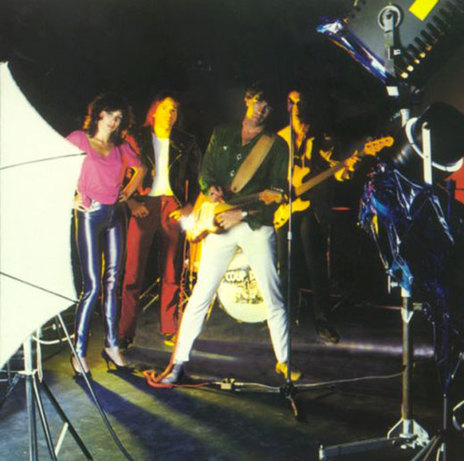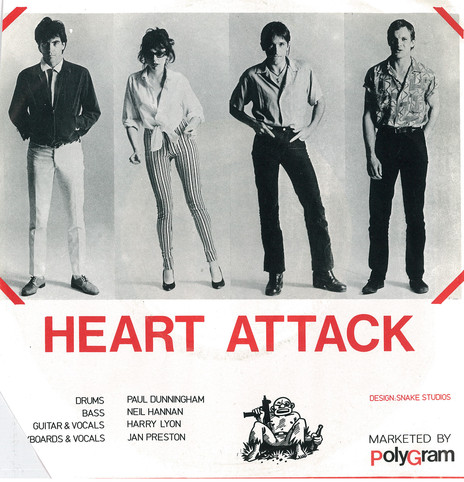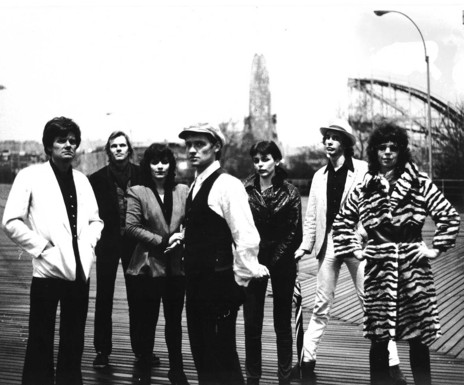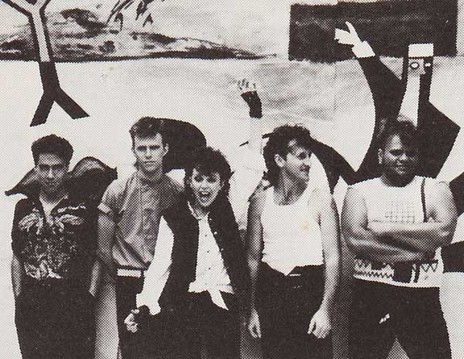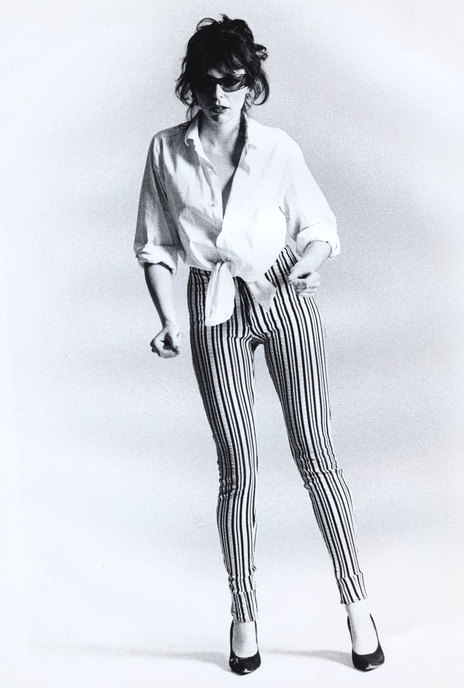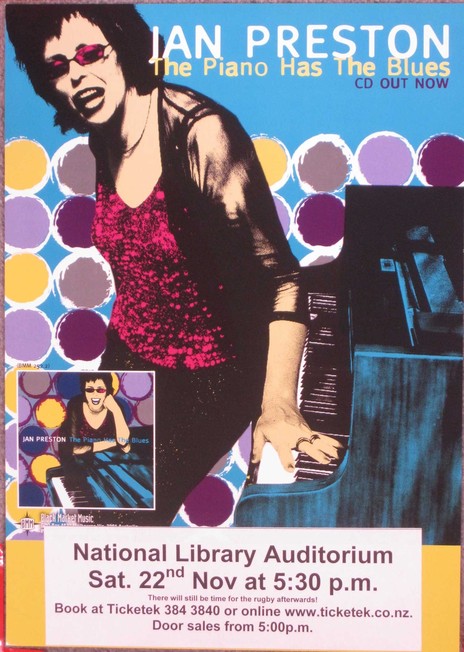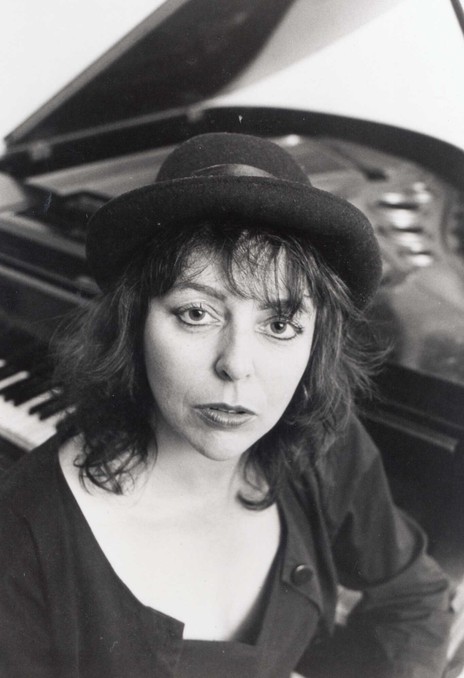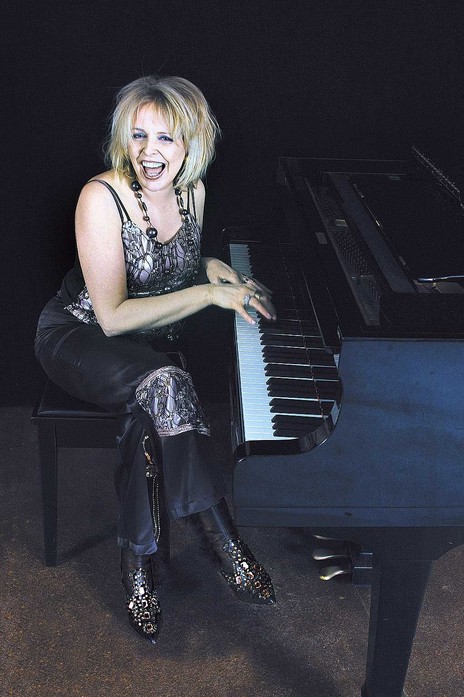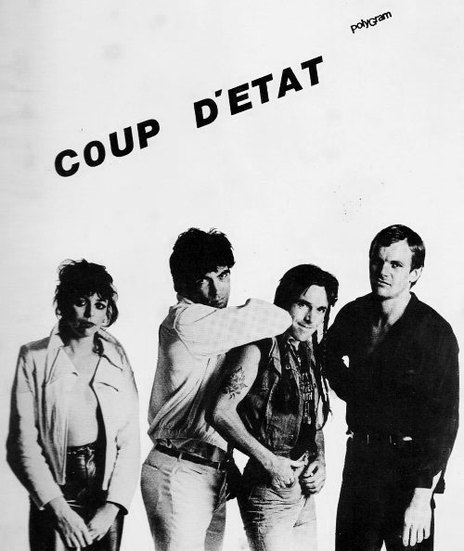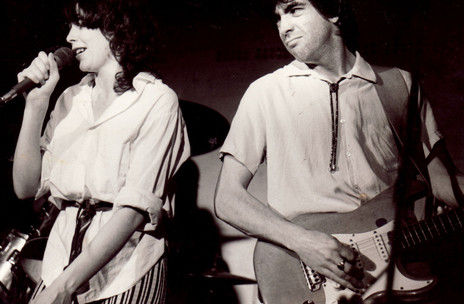Preston has scored the music for dozens of films and documentaries and TV shows, toured extensively, performed at jazz and blues festivals and won four Best Female Blues Artist and Blues Artist of the Year awards and three for best Film Score.
Australia’s Rhythm Magazine described her as having “the blues in her heart, the Mardi Gras in her fingers and a trans-Tasman attitude in her fingers”.
Australia’s Rhythm Magazine described her as having “the blues in her heart, the Mardi Gras in her fingers and a trans-Tasman attitude in her fingers”.
Preston grew up in Greymouth in a working class family where the piano was centre stage. One aunt who used to play for the silent movies would be on boogie/ stride style piano, another on the violin, accompanied by other family members on an assortment of percussive cutlery playing honky tonk tunes and radio favourites of yesteryear.
“I always had a strong sense of the beat of rhythm. My mother tells hair-raising stories of me rocking my cot so heavily at the age of one that it moved across the room. That was rather alarming in 1951.” “You’re rocking again Jan,” her Mum would say. “Me no rocky,” would come the tot’s reply.
Preston was always drawn to music with rhythm and beat whether it was Bartok, Mozart, Bach or boogie-woogie. “There was this kind of pulse; even when I played the classics I hit the rhythm.”
After 17 years of rigorous training in classical music the vision of being a concert pianist began to fade but original ideas for songs and the love of performing remained.
At 21 years of age the penny dropped. “There were very few full-on professional woman concert pianists in the world and Michael Houston and others of my era were a thousand times better than I was. I knew early on I didn’t want to teach but I knew I wanted to earn my living with my hands (playing music) and I tried everything.”
Preston says she’s obsessed by the way music can change a film and become part of an entire experience for the viewing and listening audience. Her first job creating “filmic” music was with Pacific Films alongside John O’Shea and Douglas Lilburn then came an opportunity to work with actor Sam Neill, where she wrote her own music for a documentary on architect Ian Athfield.
In the mid-1970s she found herself playing and composing for the radical Red Mole Cabaret, founded in 1974 by Alan Brunton and Sally Rodwell, which had evolved from the puppet-based performances of the White Rabbit Theatre.
With musicians, actors and writers including Martin Edmond, Jean McAllister, Deborah Hunt and the deadpan Neville Purvis (Arthur Baysting), the touring theatre troupe soon had its own provocative arts and gossip magazine called Spleen.
During a tour with Split Enz in January 1977, Red Mole members including Preston met at a tea room in Gore to discuss how they might combine mime, dance, spectacle and farce in “a satirical investigation of the national psyche”.
As Alan Brunton once said: "Our shows are as totally New Zealand as a can of Wattie’s baked beans – we are home grown theatre.”
After completing her music degree at University of Auckland, Preston moved to Wellington, cut her hair really short, put on black lipstick and began composing music for the early Red Mole shows. She was “musically conservative” and while inspired by players like Billy Preston and Leon Russell, wasn’t sure about the way forward. “Red Mole was part of the musical journey to finding my style; it was an important opening for me and theatrically very cutting edge, creative and political.”
The troupe established themselves in the heart of Wellington’s late night scene at Carmen’s Balcony, the smoky, transvestite friendly nightclub, where Red Mole presented Cabaret Capital Strut every Sunday night. Their theatre of anarchy with props, sketches, comedy, poetry, improvised farce, fire eating and topless dancers was so popular that within a couple months it was Red Mole Cabaret every night.
The shows were infused with rock and blues interludes and dozens of Jan Preston compositions. Preston’s dramatic music and musical direction was an inseparable part of the Red Mole style.
While still relatively shy, her after-show appearances with blues influenced house band Midge Marsden and the Country Flyers drew her out as a performer.
While still relatively shy, her after-show appearances with blues influenced house band Midge Marsden and the Country Flyers drew her out as a performer. The unit featured Midge on guitar and vocals, bass player Neil Hannan, Richard Kennedy on second guitar and Bud Hooper on drums.
“They were very generous to include me in their jams and blues songs. I was terrified, I had no idea what to play. Neil Hannan in particular helped me experiment and try new things.”
Carmen’s Balcony closed and in 1978 Red Mole and Midge Marsden and the Country Flyers were lured to Auckland by promoter Phil Warren.
An LP, Crossing The Tracks, was released with a selection of songs and performances including ‘Slaughter on Cockroach Avenue’, written by Brunton and Preston, featuring Beaver on vocals. “When we all moved up to Auckland we couldn’t believe cockroaches were everywhere.”
After a few months they became restless and were looking for a new outlet for their wild creative energy. In 1979, the actors and musicians took a huge leap of faith in the hope of making an impression in the United States.
The first challenge was simply to survive in a land where very few had heard of New Zealand, let alone Red Mole’s strange brand of theatrical humour and commentary.
“I arrived in New York City with $100 so the first thing I needed to do was race out and find some menial job. It’s the poorest I’ve ever been in my life and somehow this ridiculous group of people managed to exist sleeping on living room floors and somehow do this tour across America.”
The backing musicians formed their own unit, Red Alert, which performed separately, busking on the streets and performing in theatres across the USA. While there, Preston was inspired by encounters with legendary piano players including Professor Longhair.
When Preston and Hannan returned to New Zealand they teamed up with former Hello Sailor guitarist Harry Lyon, and drummer Steve Osborne under the name Wolfgang. They debuted at University of Auckland in March and then changed their name to Coup D'Etat. Osborne was soon replaced by drummer Paul Dunningham.
Their first single in 1980 was ‘No Music On My Radio’ with Preston and Lyon sharing lead vocals but the band is best known for ‘Doctor I Like Your Medicine’, which reached No.9 on the national charts and picked up the Best Single award in 1981. Their one album featured that hit.
Having decided that the rock business wasn’t for her, Preston moved to Australia to write and compose but was soon back in the limelight when she and drummer Mina Motu formed The Tribe, recording two EPs for CBS and achieving minor chart success.
She says Mina was a “very large and fearsome drummer” which ensured there was no trouble at any of their gigs. They made some film clips, which “got us wonderful exposure on the white Australian rock scene”. Motu never wore shoes, so going on Australian television playing blues and rock, “… we looked pretty outrageous.”
Preston made a deliberate career shift to work as a solo artist, performing in piano bars where she could explore different styles, tighten up her original compositions and prepare for a recording deal.
While the album of originals was still taking shape she was asked by Jayrem Records boss James Moss to fly back to Wellington to record The World’s Greatest Piano Classics. Moss then recorded two albums of her material between 1992 and 1995: We Need One Another and Accomplices.
The track ‘Between Two Worlds’ from Accomplices was reworked as the theme music for the ABC TV’s series The Australian Story.
After several solo albums Jan Preston hit her stride. Her songs were stronger and more rhythmic; the lyrics at times bittersweet or brazenly honest, but with an empathy and humour that resonated with her audiences. The proficient songwriter and composer was now an entertainer and a stage personality delighting audiences across Australia. And the music kept coming.
Preston found her niche playing the music she reckons she was born for, “the magnetic 8-beats to the bar” rhythmic toe tapping and often blues-influenced ragtime, honky tonk and boogie-woogie style.
She toured Australia with concerts at small town halls and appearances at jazz and blues festivals playing material from early albums in the genre including ‘The Piano Has The Blues’.
In 1999 she released her fifth solo album, My Room Full of Pianos, which celebrated the beginning of a brighter period in her life.
After years of battling on her own as a solo performer and solo mum, she was in a new relationship. She reconnected with Mike Webb-Pullman whom she’d first met at Colenso College in Napier in the mid-1960s. The couple live together with a room full of pianos in Sydney.
Preston says she’s obsessed with pianos and does indeed have a room full of them. “My room of pianos … that’s been my life. I have, much to my husband’s frustration, about five. He’s taken the bannister off and on so many times to get upright pianos in and out that he’s now screwed rather than nailed it.”
She says pianos are like people. “Every piano, whether Steinway, Yamaha or Bergendorfer, is slightly different.”
Playing the piano has been “my salvation, my sanity, my passion and release. I love performing and I know when people come to my shows it brightens them up and gives them something.”
Preston says the boogie beat and ragtime is so uplifting for the audience and for her. “As soon as I start playing I just forget about being stressed and strung out.”
In 2003 Jan Preston won the Australian Blues Performer of the Year.
In 2003 Jan Preston won the Australian Blues Performer of the Year, and represented the Sydney Blues Society at the International Blues Challenge in Memphis, Tennessee the following January.
That year she delivered another album, Wild Mood Swing (2004), a collection of mature songs, with lyrics like memorable conversations that literally swing the audience across a wild journey from foot tapping fun to deathbed regrets and the chaos of middle aged dating.
By the time Boogie Boots was released in 2006, Preston had clocked up three awards for Best Film Score and three Best Australian Female Blues Artist Awards.
Ahead of an invitation to return to New Zealand for the Christchurch Arts Festival and a performance at Greymouth she began reflecting on her career and wondering what she could tell the locals about the journey of her life since her early childhood days in their midst. Of course the answer came in a song.
‘Small Town Girl’ was about growing up in Greymouth, reflecting the working class, West Coast culture. When she stepped out from behind the curtain, the 170-strong audience who had come out on a Tuesday night all cheered, something she wasn’t quite prepared for.
“I don’t think any of them knew what I was going to play of whether I was going to be any good but they had come because I was one of theirs; Tui and Ed Preston’s daughter. It was very emotional and I had to really pull myself together to get over to that grand piano and do my normal job, as it were.”
Preston sees herself as a champion of piano culture, that distant Baby Boomer memory of parents and their friends hovering around the piano for a rousing sing-along. On her album Queen Of Boogie Woogie Piano (2006) Preston took songs from the piano greats who had influenced her but played them in her style.
Her influences include a range of keyboard greats including Professor Longhair, Katie Webster, Fats Domino, Jerry Lee Lewis, Albert Ammons and Julia Lee, but it is Winifred Atwell who has made the most obvious impression on her career. Preston spent two years researching the stories of her life and music before recording the album Jan Preston Plays the Music of Winifred Atwell (2009) and touring the one woman show in 2010.
She says Trinidad born, classically trained Winifred Atwell, who toured Australia and New Zealand extensively between the 1940s and early 1970s, brought great joy to many people. She was “part of that instrumental piano culture that has gone now … I like to get people singing and clapping and feeling involved when I play songs like ‘The Black and White Rag’.”
Preston used to ask her audiences, “Does anyone here remember Winifred Atwell?” thinking maybe five hands would go up, but she was astonished how much love and respect there was for her. Atwell’s infectious style and smile was embedded into the post-war Australasian culture. She released dozens of albums and performed regularly on the concert scene. While she was flamboyant and had her hands insured for £40,000 with Lloyds of London, in a contract that stipulated “Miss Atwell must never do the dishes!” she was also a tireless worker for charity.
Preston is a virtual mine of information about the honky tonk, stride piano icon. “No one will know how much Winnie Atwell did for children’s charities in Australia and New Zealand. She turned down paid shows to keep different institutions going and left her estate to the Blind Institute of Australia.”
Atwell endured a lot of racism but carried herself with dignity and humour. “She was a good person and gave so much with her music.”
While the effervescent Jan Preston is one of Australia’s best loved solo performers for her enthusiastic rhythm and blues nostalgia and impressive song catalogue, she is not as well known for her extraordinarily successful career as a composer for film and television.
Preston has written “hours and hours of film music” – at last count seven feature films – and worked on hundreds of documentaries and on television drama theme music.
Family has loomed large throughout Jan Preston’s career. While they were never particularly “well to do”, they instilled a love of music and film from an early age. Being able to write the soundtrack for Home By Christmas, the story of her father and his wartime memoirs produced and written by her sister Gaylene Preston, was a moving and powerful experience.
It was one way of saying thank you to her parents for the sacrifices they made to ensure she had a piano and lessons to go with it when she was growing up in Greymouth.
